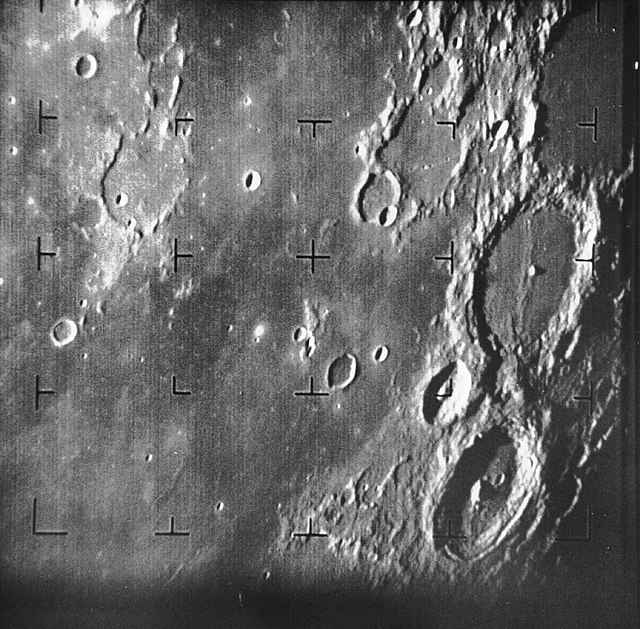Ranger 1 was a prototype spacecraft launched as part of the Ranger program of uncrewed space missions. Its primary mission was to test the performance of those functions and parts necessary for carrying out subsequent lunar and planetary missions; a secondary objective was to study the nature of particles and fields in the space environment. Due to a launch vehicle malfunction, the spacecraft could reach only Low Earth orbit, rather than the high Earth orbit that had been planned, and was only able to complete part of its mission.
Ranger 1 Satellite in preparation for use at the Parade of Progress Show at the Public Hall, Cleveland, Ohio, August 1964
The Ranger program was a series of uncrewed space missions by the United States in the 1960s whose objective was to obtain the first close-up images of the surface of the Moon. The Ranger spacecraft were designed to take images of the lunar surface, transmitting those images to Earth until the spacecraft were destroyed upon impact. A series of mishaps, however, led to the failure of the first six flights. At one point, the program was called "shoot and hope". Congress launched an investigation into "problems of management" at NASA Headquarters and Jet Propulsion Laboratory. After two reorganizations of the agencies, Ranger 7 successfully returned images in July 1964, followed by two more successful missions.
First image of the Moon returned by a Ranger mission (Ranger 7 in 1964)
Program Ranger Organization Chart
Ranger block I spacecraft diagram. (NASA)
A Ranger probe undergoing restoration at the Udvar-Hazy Center





